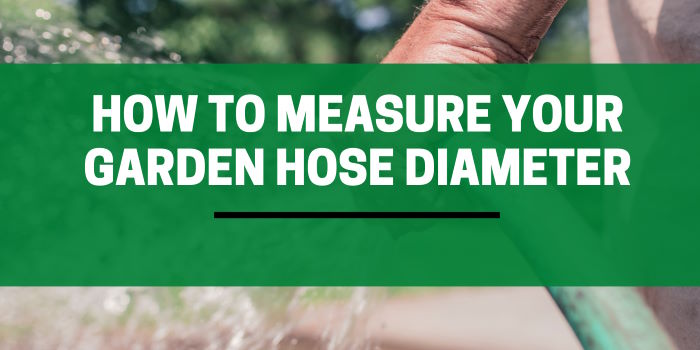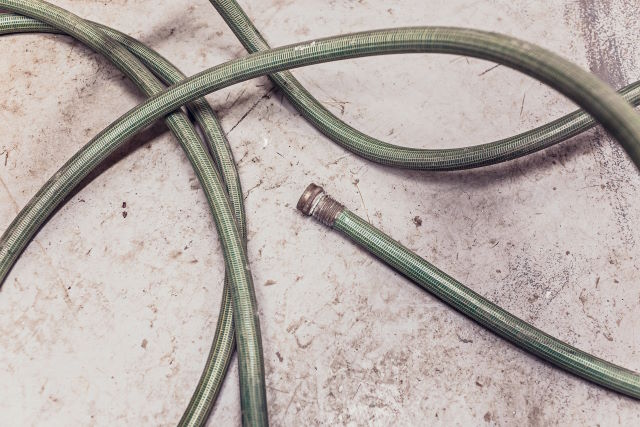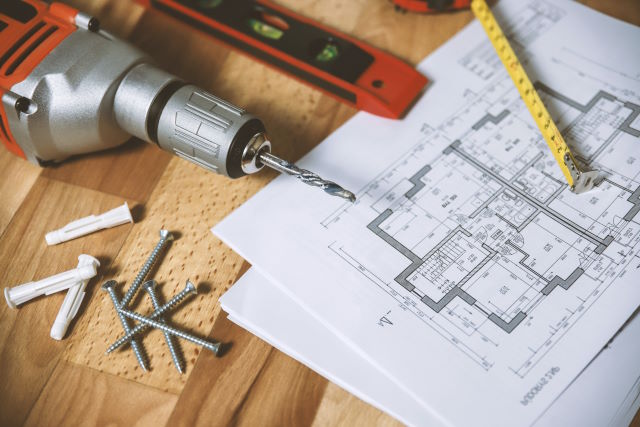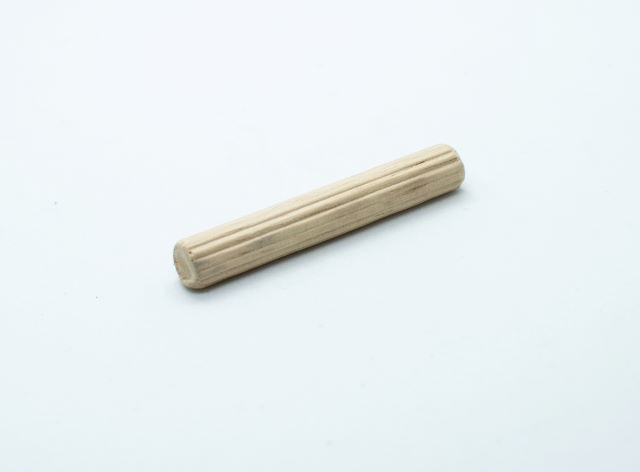
Measuring the diameter of your garden hose is essential when replacing or purchasing new connectors or adapters. It is also essential to know this when calculating the flow rate and the volume of water that the pipe can handle.
Contents
Hose Size
Standard
This is the most common type found in households. They are typically made from rubber, vinyl, or a combination of both materials.

They are available in various diameters, with ⅝-inch and ¾-inch being the most common.
The 4 standard garden hose sizes are:
- 3/8″ (10mm)
- 1/2″ (12.5mm)
- 5/8″ (15mm)
- 3/4″ (19mm)
It’s important to note that different materials will mean that they have varying outer widths. For example, rubber hoses tend to be thicker with a larger external diameter and circumference.
Soaker
These are designed to release water slowly along their length, perfect for creating an irrigation system for watering plants and flower beds. Soaker hoses are usually made of porous materials that allow water to seep through. They typically have smaller diameters, ranging from ¼-inch to ½-inch.
Expandable
Expandable types are lightweight and easy to store. They can expand up to three times their original length when filled with water and contract when the water is released. They usually have a size similar to a normal type.
Commercial
These are heavy-duty hoses designed for more demanding applications, such as construction sites or large gardens. They have larger diameters and thicker walls to handle higher water pressure.
Basic Tools for Measuring A Pipe
Tape Measure
A measuring tape is a simple tool that can be used to measure the distance across the inside of your tubing. A ruler is another option.

However, these tools may not be completely accurate when performing internal measurements.
Digital Caliper
A digital caliper is a more accurate and precise tool in which the internal diameter can be measured. They can provide this accurately in both inches and millimeters, making it a versatile option.
Digital calipers usually support both metric and imperial unit systems.
Paper Tube
A paper tube, such as a toilet paper roll, can be used as a makeshift tool for calculating your hosepipe. By comparing the width of the paper tube to the hose, you can estimate the diameter. While not as precise as a digital caliper, it can still be a helpful alternative in a pinch.
Wooden Dowels
Grab a 5/8″ dowel and see if it fits snugly into the end. If it does, then that’s the actual internal size!

But if the 5/8″ dowel is too loose inside of it, don’t worry. Yours might have a 3/4″ diameter instead.
Of course, not everyone has dowels lying around the house. So if you don’t, there are other ways to get the correct sizing.
Drill Bits
A drill bit can be used like a wooden dowel above. If your 5/8″ drill bit fits snugly, you will know the diameter already.
Measuring Your Hosepipe
Step 1: Gather Materials
Before you start, make sure you have the necessary tools at hand. A tape measure, digital caliper, or paper tube will suffice. You may also need a pen and paper to note down the numbers.
Step 2: Determine The Internal Size
The internal diameter is the most important measurement for water piping, as it directly affects the flow of water. Use a digital caliper to measure the internal width. If you don’t have a caliper, use tape measures or the paper tube method for a rough estimate.
Step 3: Connector Measurement
Connectors are essential for attaching to an outdoor spigot, hose bib, or accessories. To ensure compatibility, assess the diameter of your fitting using the same tools from the previous step. Keep in mind that standard connectors are typically ¾-inch in size.
Step 4: Understand GHT and NH
When working out the internal pipe diameter, it’s also important to consider the thread size of your hose fittings.
Garden Hose Thread (GHT) and National Hose (NH) are two common thread standards used in the United States. Ensure your fittings are compatible with the thread standard of your faucet and other attachments.
The Importance Of Knowing Your Pipe Width
The dimensions of any water conduit can significantly impact the flow of water and the overall efficiency of your watering system.
A larger diameter allows more water to pass through, while a smaller internal width restricts the flow, leading to potential pressure losses and flow erosion. Ensuring the correct size will help maintain your watering performance and extend its lifespan.
If you wish to extend your hose by connecting another one to it or by daisy chaining it, it is also essential to know the size of your existing one to ensure an easy leak-free connection between them.
How Diameter Affects Water Flow
Knowing your flow rate can help you determine how long to water your plants and make sure you’re not over or under-watering them. It is also useful to know when running sprinklers for a lawn or an irrigation system.
Here are the four main factors that determine your flow rate:
- Internal Diameter: They come in three standard sizes: 1/2, 5/8, and 3/4 inches. The diameter determines how many gallons per minute it can put out. Generally, a larger internal breadth means a higher GPM.
- Water Pressure: The water pressure also affects your flow rate. The higher the pressure, the faster the water will flow through it.
- Length: The length can also impact the flow rate. If your hose is longer, the flow rate may be lower. So keep this in mind when choosing a length. Most come in lengths of 25,50,75 or 100 feet.
- Flow Rate Estimation: It can be tricky to estimate the flow rate because there are so many factors at play. But don’t worry – there’s an easy way to determine your flow rate. Just use a gallon bucket and time how long it takes to fill up. For example, if it takes 10 minutes to fill a 20-gallon bucket, your flow rate is 2 GPM.
By considering these factors and using the bucket method, you’ll have a better understanding of your flow rate. This can help to ensure your plants are getting the right amount of water or how long it might take to fill a pool.
Conclusion
Estimating the diameter of your outdoor hose is crucial for ensuring optimal performance and compatibility with attachments. With the right tools and a step-by-step approach, you can accurately measure your size and select the most suitable type.
